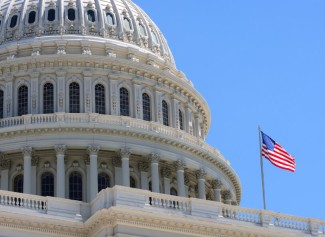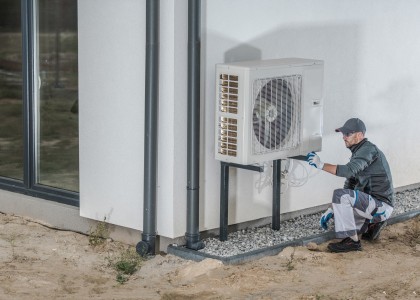When Congress returns to Washington this month, it will continue to face not only a health crisis but also an economic crisis, both due to COVID-19. More workers are unemployed than at any time since the Great Depression, with unemployment highest among low-income communities and communities of color.
At the same time, we face a looming climate crisis. And the challenges are interconnected. For example, 360,000 energy efficiency workers—who would normally be helping cut our carbon emissions—are among those still unemployed.
We wanted to see how federal policymakers could most effectively confront the economic and climate crises together using investments in energy efficiency. We modeled 17 different proposed energy efficiency programs and tax incentives Congress could fund—to create jobs quickly while decreasing greenhouse gas emissions, reducing energy costs for households and businesses, and cutting air pollution for many years to come. In a white paper released today (building on a preliminary fact sheet we released a few weeks ago), we find that these investments could together achieve:
- 660,000 added job-years through 2023, and 1.3 million added job-years over the lifetime of the investments and savings
- 910 million tons of lifetime reduced carbon dioxide emissions
- $120 billion in lifetime energy bill savings
Here are some of the highlights and our takeaways.
First, we should get people to work weatherizing homes as soon as it is safe. For decades, the federal government has funded community groups and contractors to weatherize the homes of low-income families, reducing their energy bills by about $300 each year while addressing health and safety problems including asthma. But too many families are stuck on a long waiting list. Boosting funding by $5 billion over five years would add 30,000 years of employment (job-years) through 2023, we found. Additional funding for retrofitting low and moderate-income multifamily housing could add another 70,000 job-years.
Higher-income households could benefit from energy savings too. Rebates for efficiency upgrades in homes (with higher rebates for moderate-income households), paired with support for online training for contractors, could help expand that market while adding 40,000 near-term job-years (this proposal has been dubbed HOPE for HOMES).
Second, Congress can put more people to work by investing in low-carbon, efficient transportation. Public transportation agencies are in financial distress and may struggle to serve riders as demand bounces back. Additional investments in bicycling and pedestrian infrastructure could make walking and biking reliable, safe alternatives during the recovery period. We should spur states to focus on transportation infrastructure projects that have the greatest potential to reduce carbon emissions, which we estimate could quickly add almost 90,000 job-years.
We can also gear up now to more quickly expand use of electric vehicles, which are generally cleaner and less expensive to operate. In addition to extending credits to help more Americans buy electric cars and light trucks and help companies install public charging stations, lawmakers should add a credit to encourage companies to buy new electric freight vehicles. The impacts would balloon in later years as the market grows, with incentives ultimately spurring an added 200,000 job-years (over the lifetime of the investment, not just through 2023).
Third, Congress can support domestic manufacturers, who have taken a big hit from shutdowns, sudden demand shifts, and broken supply chains. Many of these manufacturers have big energy costs. We should invest $500 million to send experts into the 1,500 largest manufacturing plants in the country to identify efficiency upgrades that will help these companies reduce their costs and their greenhouse gas emissions and better compete in international markets. We should also help these plants and others hire energy managers to reduce their energy costs over time. Another $500 million could leverage $5 billion in loans to help smaller plants implement efficiency measures. Combined, these investments would help save industry an estimated $13 billion in energy costs (present value) and provide $28 billion in other benefits to manufacturing plants.
Other important proposals would help small businesses, commercial buildings, new homes, domestic supply chains, and state and local governments, among others, become more efficient. With strategic investments in reducing energy waste, we can put more people back to work now—nearly 700,000 job-years through 2023—and for years to come.
We can help families and companies save more than $100 billion over the coming decades, especially in low-income communities. And we can reduce greenhouse gas emissions over time by more than 900 million tons (as much as 200 million cars and light trucks emit in a year), while developing building retrofit, electric vehicle, and industrial decarbonization infrastructure that is crucial for addressing climate change while spurring long-term economic growth. It’s time for Congress to help all of us get to work.




